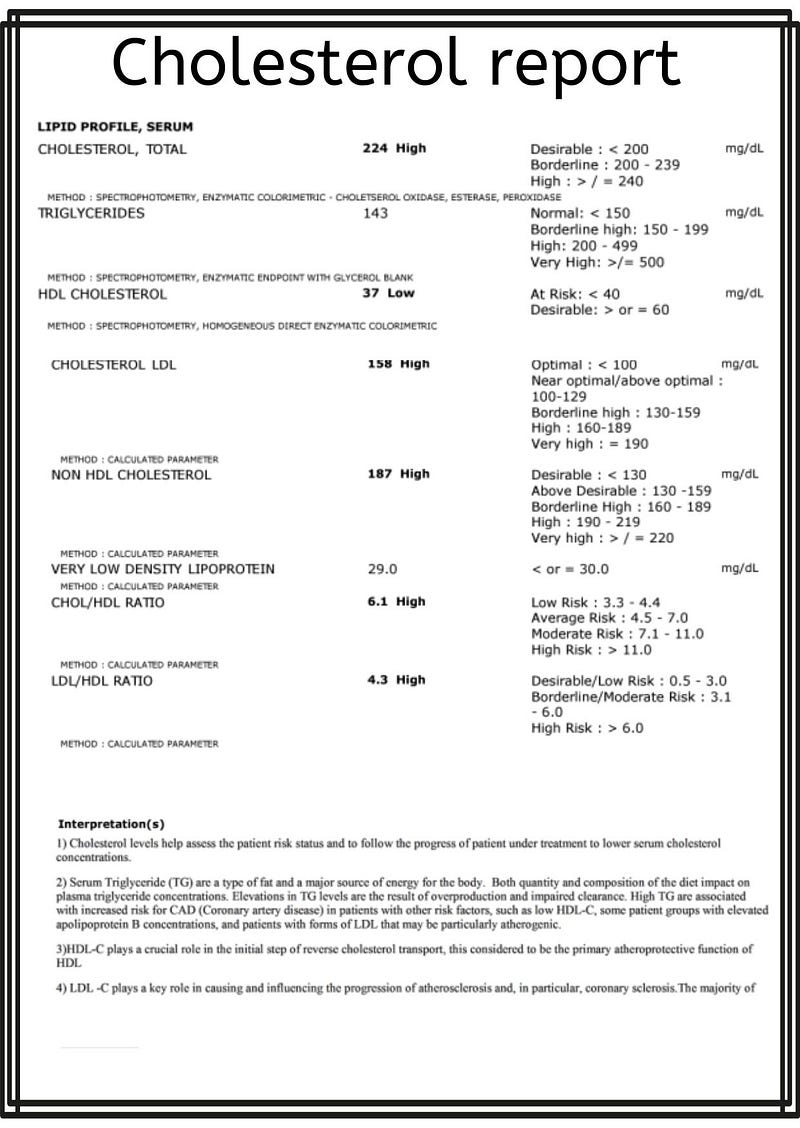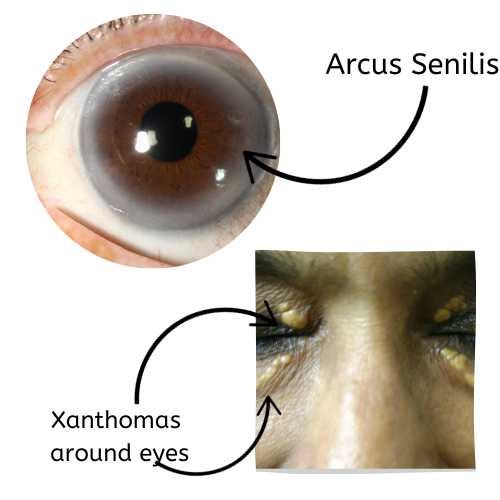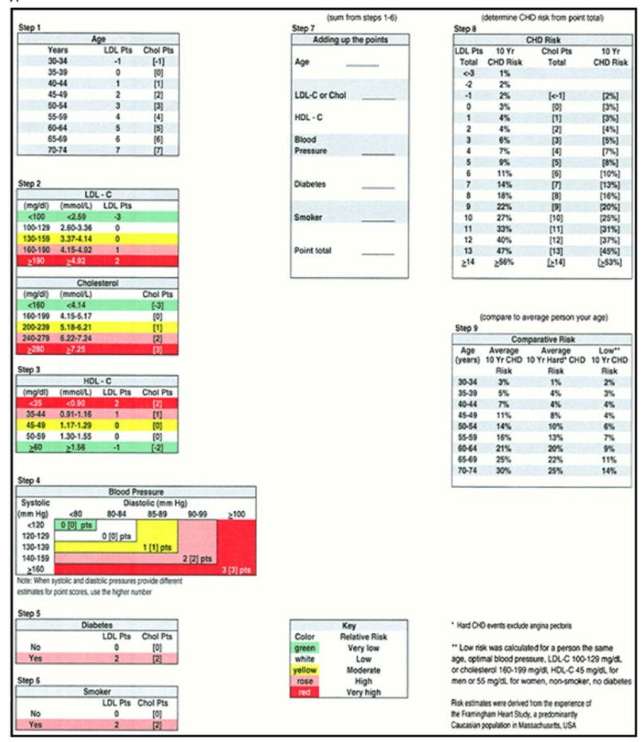How Cholesterol Levels Impact Your Heart Health
Practical tips to predict cardiovascular risk using your cholesterol biomarkers from a GP’s perspective

In today’s fast-paced world, characterized by a relentless work culture and limited time for health concerns, cardiovascular well-being often takes a back seat. Regrettably, heart disease has become increasingly prevalent, affecting individuals of all age groups, including the younger population.
As a family physician, one of the important investigations I carry out in cases of blood pressure or any heart disease, particularly in elderly people, is checking for cholesterol levels. Cholesterol reports, as you must already be aware, indicate your heart health, particularly coronary heart disease.
Reading these reports can be overwhelming and sometimes perplexing. Are you one of those perplexed by the numbers and medical jargon on your cholesterol reports? Don’t worry because I am here to help you decode the mysteries of these important numbers.
In this step-by-step guide, I’ll walk you through understanding your cholesterol reports and predicting your cardiovascular risk. I am sure you must have heard and read about cholesterol many times before reading this- but in this article, I will explain it with real-time case report studies.
Why is learning about cholesterol important?
Understanding your cholesterol levels is crucial for assessing your heart health and predicting your chances of developing cardiovascular disease.
By deciphering the numbers and terminology in your reports, you can gain valuable insights into your overall health and make informed decisions about lifestyle and medical interventions.
Whether you’re grappling with high cholesterol or simply looking to stay proactive about your cardiovascular health, this guide will provide you with the knowledge and tools you need.
I’ll explain the different types of cholesterol, their optimal ranges, and their implications on your heart health. Additionally, I will clarify any confusing terms you may encounter and answer common questions about cholesterol testing. So, let’s dive in head first.
A Sample Cholesterol Report
The picture below is a sample cholesterol report I got done recently for one of my patients. You can understand the abnormal parameters that have been highlighted.

So, is this report good, not-so-good, or bad for this patient?
As you can see above, some parameters are high and some low. From my point of view, the cardiovascular risk for this patient is moderately high. And I definitely aim to work on it for this patient.
Let’s learn how to go about it in this article.
Understanding cholesterol levels and their significance
Cholesterol is a waxy substance that is produced by the liver and is also found in certain foods. While it is essential for the body’s normal functioning, having too much cholesterol can pose a significant risk to your heart health.
Cholesterol is transported through the bloodstream in particles called lipoproteins, which are classified into two main types: low-density lipoprotein (LDL) and high-density lipoprotein (HDL).
LDL cholesterol is often called “bad” cholesterol because it can build up in the arteries, leading to atherosclerosis and an increased risk of heart disease.
Atherosclerosis is a term used for the building up of ‘plaques’, a waxy substance made up of cholesterol and blood components like fibrin, platelets, etc., in the wall of arteries of the heart as well as other parts of the body.
On the other hand, HDL cholesterol is known as “good” cholesterol because it helps remove LDL cholesterol from the bloodstream, reducing the risk of heart disease.
When you receive your cholesterol report, it will typically indicate your total cholesterol level and the levels of LDL cholesterol, HDL cholesterol, and triglycerides.
These numbers provide valuable information about your cardiovascular health and can help your healthcare provider assess your risk of developing heart disease.
Different types of cholesterol and their role in cardiovascular health
To better understand your cholesterol reports, it’s important to familiarize yourself with the different types of cholesterol and their respective roles in cardiovascular health.
Total cholesterol: This represents the sum of your LDL, HDL, and a fraction of your triglycerides. While it provides a general overview of your cholesterol levels, it is not sufficient on its own to assess your cardiovascular risk.
LDL cholesterol: As mentioned earlier, LDL cholesterol is commonly called “bad” cholesterol. High levels of LDL cholesterol can contribute to the buildup of plaque in the arteries, increasing the risk of heart disease.
HDL cholesterol: HDL cholesterol is considered “good” cholesterol because it helps remove LDL cholesterol from the bloodstream and transports it to the liver for disposal. Higher HDL cholesterol levels are generally associated with a lower risk of heart disease.
Triglycerides: Triglycerides are a type of fat that circulates in the bloodstream. While not considered cholesterol, they are often measured alongside cholesterol levels. Elevated triglyceride levels are associated with an increased risk of heart disease, especially when combined with high LDL cholesterol levels.
Factors that influence cholesterol levels
Cholesterol levels can be influenced by a variety of factors, including both genetic and lifestyle factors. Understanding these influences can provide context to the numbers on your cholesterol reports.
Genetics: Your genes play a significant role in determining your cholesterol levels. Some individuals have a genetic predisposition to high cholesterol, even with a healthy lifestyle.
If you have a family history of high cholesterol or heart disease, it’s important to be especially vigilant about monitoring your cholesterol levels.
Some of my patients are aware of this, and they have already modified their lifestyle and kept it under control.
Dietary choices: The foods you consume can have a direct impact on your cholesterol levels. Diets high in saturated fats, trans fats, and dietary cholesterol can raise LDL cholesterol levels.
On the other hand, eating heart-healthy foods such as fruits, vegetables, whole grains, nuts and seeds, and lean proteins can help lower LDL cholesterol and increase HDL cholesterol levels.
Physical activity: Regular physical activity has been shown to increase HDL cholesterol levels and lower LDL cholesterol levels. Aim for at least 150 minutes of moderate-intensity aerobic exercise or 75 minutes of vigorous exercise each week to help improve your cholesterol profile.
Obesity and body weight: Excess body weight, particularly around the waistline, is associated with higher LDL cholesterol levels and lower HDL cholesterol levels. Losing weight through a combination of healthy eating and regular exercise can have a positive impact on your cholesterol levels.
Smoking: Smoking damages blood vessels and lowers HDL cholesterol levels, making it harder for your body to remove LDL cholesterol from the bloodstream. Quitting smoking can lead to significant improvements in your cholesterol profile and overall cardiovascular health.
While these factors can influence cholesterol levels, they are not the sole determinants of cardiovascular risk. Your healthcare provider will consider these factors and cholesterol levels to assess your overall risk.
Interpreting cholesterol reports: key metrics and their meaning
When you receive your cholesterol report, it may appear daunting at first glance. However, understanding the key metrics and their meaning can demystify the numbers and provide you with valuable insights into your cardiovascular health. (Refer to the second above picture-the second one-for the normal range of all these components.)
Total cholesterol: This number represents the total amount of cholesterol in your bloodstream, including LDL and HDL cholesterol. While it provides a general overview, it does not provide a complete picture of your cardiovascular risk. Keeping this number below the maximum range should be the goal everyone should have [below 200 mg/dl].
LDL cholesterol: Often called “bad” cholesterol, LDL cholesterol contributes to plaque buildup in the arteries. The optimal range for LDL cholesterol depends on your overall risk profile, but in general, lower levels are better. I would prefer a number below 100 mg/dl.
HDL cholesterol: Considered “good” cholesterol, higher HDL cholesterol levels are generally associated with a lower risk of heart disease. The optimal range for HDL cholesterol is typically higher for women than for men. Let’s have it in the range of 40 to 60 mg/dl, not less, not more.
Triglycerides: Elevated triglyceride levels are associated with an increased risk of heart disease, especially when combined with high LDL cholesterol levels. The optimal range for triglycerides is generally below 150 mg/dL.
Keeping it below this level, even lower, should be our goal.
In addition to these key metrics, your cholesterol report may include ratios and other markers that provide further insights into your cardiovascular health.
For example, the LDL/HDL ratio can indicate your risk of developing heart disease, with lower ratios being more favorable.
Always try to have it around 1 to 2. The total cholesterol to HDL ratio should be below 4.0; the lesser, the better.
Are there any physical signs that indicate high cholesterol levels?
Sometimes, high cholesterol levels can present as a greyish or brown circle around the iris of your eyes. This is more visible in patients above 60 years and is referred to as Arcus Senilis. (See the image below)

Younger people may present raised yellow patches around the skin of the eyes called Xanthomas.
Assessing cardiovascular risk based on cholesterol reports
Once you understand the key metrics on your cholesterol report, you can use them to assess your cardiovascular risk. Your healthcare provider will consider your cholesterol levels alongside other risk factors, such as age, sex, smoking status, blood pressure, and family history of heart disease.
Based on these factors, your health provider /doctor may calculate your 10-year cardiovascular risk using tools such as the Framingham Risk Score [see below] or the ASCVD (Atherosclerotic Cardiovascular Disease) Risk Estimator.
The optimal risk factor, according to ASCVD, is 11.2%- you can calculate your risk by visiting this site- ASCVD Estimator.

These tools consider multiple risk factors, including cholesterol levels, to estimate your likelihood of experiencing a cardiovascular event, such as a heart attack or stroke, within the next ten years.
Understanding your cardiovascular risk can help guide decisions about lifestyle modifications and medical interventions.
If your cholesterol levels indicate an increased risk, your healthcare provider may recommend lifestyle changes and/or prescribe medications to help manage your cholesterol levels and reduce your risk of heart disease.
Lifestyle changes to improve cholesterol levels and reduce cardiovascular risk
Making certain lifestyle modifications can have a significant impact on your cholesterol levels and overall cardiovascular health. Here are some key changes you can consider:
Healthy eating: Incorporate heart-healthy foods like Prudent diet into your diet, such as fruits, vegetables, nuts and seeds, whole grains, lean proteins, and healthy fats. Limit your intake of saturated fats, trans fats, and dietary cholesterol.
Physical activity: Engage in regular physical activity to improve your cholesterol profile and overall cardiovascular health. Aim for at least 150 minutes of moderate-intensity aerobic exercise or 75 minutes of vigorous-intensity aerobic exercise each week.
Weight management: If you’re overweight or obese, losing weight can help improve your cholesterol levels. Focus on achieving a healthy weight through a combination of healthy eating and regular physical activity.
Smoking cessation: Quitting smoking can lead to significant improvements in your cholesterol profile and overall cardiovascular health. Seek support from healthcare professionals or smoking cessation programs to increase your chances of success.
Moderate alcohol consumption: If you choose to consume alcohol, do so in moderation. Excessive alcohol intake can raise triglyceride levels and contribute to high blood pressure.
By implementing these lifestyle changes, you can improve your cholesterol levels and reduce your overall cardiovascular risk.
Medical interventions for managing high cholesterol
Sometimes, lifestyle modifications alone may not be sufficient to manage high cholesterol levels.
Your healthcare provider may recommend additional medical interventions to help lower your cholesterol and reduce your risk of heart disease. Common medical interventions include:
Statins: Statins are medications that help lower LDL cholesterol levels by inhibiting the liver’s production of cholesterol. They are often prescribed to individuals with high LDL cholesterol or a history of cardiovascular disease.
Commonly used drugs are atorvastatin, simvastatin, and rosuvastatin.
Ezetimibe: Ezetimibe is a medication that works by reducing the absorption of cholesterol in the intestines. It is typically prescribed in combination with statins for individuals who require additional cholesterol-lowering therapy.
PCSK9 inhibitors: PCSK9 inhibitors, short form for proprotein convertase subtilisin/Kexin type 9 inhibitor, are a newer class of medications that can lower LDL cholesterol levels by blocking a protein that prevents the liver from removing LDL cholesterol from the bloodstream.
They are typically prescribed for individuals with hypercholesterolemia who have not achieved their target LDL cholesterol levels with other interventions or having side effects from statins. Examples of PCSK9 inhibitors are- alirocumab (Praluent) and evolocumab (Repatha).
Bile acid sequestrants: Bile acid sequestrants work by binding to bile acids in the intestines, preventing their reabsorption and promoting the excretion of cholesterol. They are often prescribed as an adjunct therapy for individuals with high LDL cholesterol.
It is important to note that these medications may have side effects and should be taken under the guidance of a healthcare professional.
Your healthcare provider will consider your overall risk profile and cholesterol levels to determine the most appropriate treatment plan for you.
Monitoring and tracking cholesterol levels over time
Once you’ve taken steps to improve your cholesterol levels, it’s important to monitor and track them over time.
Regular cholesterol testing can help assess the effectiveness of lifestyle modifications and medical interventions.
Your healthcare provider/doctor will determine the frequency of cholesterol testing based on your risk profile and the specific interventions being implemented.
In general, individuals with high cholesterol or a history of cardiovascular disease may require more frequent monitoring.
By tracking your cholesterol levels over time, you can evaluate the impact of your efforts and make any necessary adjustments to your lifestyle or treatment plan.
Remember to work closely with your healthcare provider to ensure that your cholesterol management remains on track. You can also read this article for further information on managing cholesterol levels-
Conclusions
To conclude, I want to point out some salient features of understanding your cholesterol levels. Decoding your cholesterol reports may seem daunting at first, but with the knowledge provided in this step-by-step guide, you can gain valuable insights into your cardiovascular health.
Understanding the different types of cholesterol, interpreting key metrics, and assessing your cardiovascular risk can empower you to make informed decisions about lifestyle modifications and medical interventions.
By implementing healthy lifestyle changes, such as adopting a heart-healthy diet, engaging in regular physical activity, maintaining a healthy weight, quitting smoking, and moderating alcohol consumption, you can improve your cholesterol levels and reduce your risk of heart disease.
In some cases, additional medical interventions may be necessary, and your healthcare provider can guide you in determining the most appropriate treatment plan.
Remember to regularly monitor and track your cholesterol levels to evaluate the effectiveness of your interventions.
By taking control of your cardiovascular health through cholesterol reports, you can work towards a healthier future and reduce your risk of heart disease.
Thank you for reading my story.
I wrote this article for information purposes. If you have health issues, please consult with your family physician.
Apart from general practitioners like me, if you enjoy reading well-researched health articles, you may check the stories of Dr Mehmet Yildiz and Robert Roy Britt, whom I follow for their valuable content on important health topics on this platform. Happy reading.






